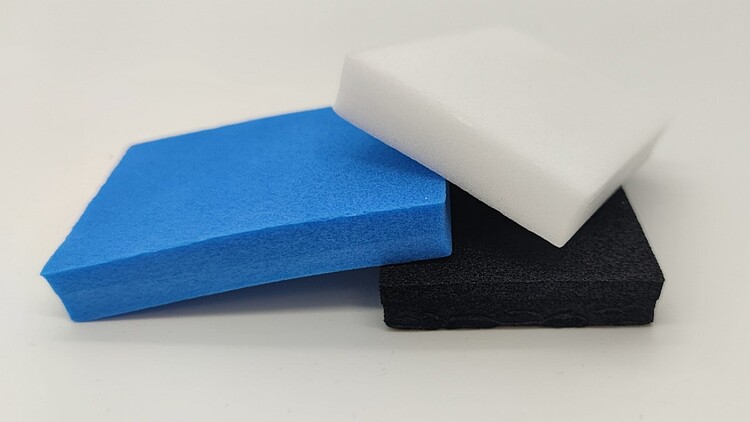R-Schaum - Circular Economy: Process development and prototype application for recycling cross-linked foam waste
 © Pogrzeba | IKK
© Pogrzeba | IKK
| Year: | 2024 |
| Funding: | Deutsche Bundesstiftung Umwelt (DBU) |
| Duration: | 02/2024 to 02/2026 |
| Further information | https://www.dbu.de/projektdatenbank/39121-01/ |
Plastic-based foams play an important role in many applications, such as suitcase inserts or packaging padding, but also in mattresses or medical pillows. Foam waste is generated during the manufacturing process (post-industrial) as well as after the use phase (post-consumer). According tot he current status, however, the recycling of plastic-based foams, especially cross-linked foams, is hardly possible. There are many reasons for this: low density combined with high volume and the associated high logistical effort make effective transportation difficult. In addition, depending on the chemical composition, recycling is not always technically possible using established methods. Sustainable recycling options are therefore being investigated in a joint research project with the foam processor Kretschmar.
The main objective of the "R-Foam" project is therefore to develop an innovative, effective prototype recycling solution that makes it possible to utilize cross-linked PE foams economically and materially. From a scientific and technical point of view, the focus is particularly on the investigation and development of suitable shredding technologies for cross-linked PE foams. The aim is to add cross-linked material as a filler to non-cross-linked PE for optimum processing. In the course of this, an optimum particle morphology is to be determined and established on the basis of the quality of the resulting recyclates. This should make it possible to return the shredded foam waste to foam production as a filler or to replace raw materials in injection molding applications as a reinforcing material. Ideally, the reuse as recycled granulate for the production of new goods would create a completely new closed-loop raw material cycle, which does not exist yet and would be of great importance across regions and industries.
Contact
Sahra Pogrzeba, M.Sc.
pogrzeba@ikk.uni-hannover.de
+49 511 764 13172




















